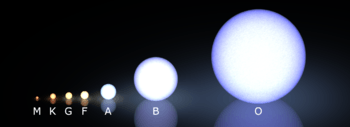HD 143436
| Observation data Epoch J2000 Equinox J2000 | |
|---|---|
| Constellation | Serpens |
| Right ascension | 16h 00m 18.83807s[1] |
| Declination | +00° 08′ 13.2332″[1] |
| Apparent magnitude (V) | 8.03[2] |
| Characteristics | |
| Spectral type | G3V[3] |
| B−V color index | 0.644[4] |
| Astrometry | |
| Radial velocity (Rv) | −24.7 ± 0.7[4] km/s |
| Proper motion (μ) | RA: −135.26[1] mas/yr Dec.: −108.52[1] mas/yr |
| Parallax (π) | 24.67 ± 0.95[1] mas |
| Distance | 132 ± 5 ly (41 ± 2 pc) |
| Absolute magnitude (MV) | 4.87 ± 0.10[4] |
| Details | |
| Mass | 1.01 ± 0.02[4] M☉ |
| Surface gravity (log g) | 4.28 ± 0.12[4] cgs |
| Temperature | 5768 ± 43[4] K |
| Metallicity [Fe/H] | 0.008[4] dex |
| Rotational velocity (v sin i) | < 2.6[4] km/s |
| Age | 3.8 ± 2.9[4] Gyr |
| Other designations | |
| Database references | |
| SIMBAD | data |
HD 143436 also known as HIP 78399 is a G-type star in the constellation Serpens. The temperature, rotation, mass, and abundance of elements in this star are close to properties of the Sun, and for this reason it is a solar twin candidate. The only notable difference is an approximately six times higher abundance of lithium compared to the Sun and a much younger age at 3.8 Gyr. The space velocity components of this star are (U, V, W) = (−19.2, −38.6, −7.0) km/s.[4]
Sun comparison
This chart compares the Sun to HD 143436.
| Identifier | J2000 Coordinates | Distance (ly) |
Stellar Class |
Temperature (K) |
Metallicity (dex) |
Age (Gyr) |
Notes | |
|---|---|---|---|---|---|---|---|---|
| Right ascension | Declination | |||||||
| Sun | — | — | 0.00 | G2V | 5,778 | +0.00 | 4.6 | [5] |
| HD 143436 [6] | 16h 00m 18.8s | +00° 08′ 13″ | 132 | G3V | 5768 | +0.008 | 3.8 | [4] [7] |
To date no solar twin with an exact match as that of the Sun has been found, however, there are some stars that come very close to being identical to that of the Sun, and are such considered solar twins by the majority of the public. An exact solar twin would be a G2V star with a 5,778K temperature, be 4.6 billion years old, with the correct metallicity and a 0.1% solar luminosity variation.[8] Stars with an age of 4.6 billion years are at the most stable state. Proper metallicity and size are also very important to low luminosity variation. [9][10][11]

References
- 1 2 3 4 5 Van Leeuwen, F. (2007). "Validation of the new Hipparcos reduction". Astronomy and Astrophysics. 474 (2): 653. arXiv:0708.1752
 . Bibcode:2007A&A...474..653V. doi:10.1051/0004-6361:20078357.
. Bibcode:2007A&A...474..653V. doi:10.1051/0004-6361:20078357. - ↑ Høg, E.; Fabricius, C.; Makarov, V. V.; Urban, S.; Corbin, T.; Wycoff, G.; Bastian, U.; Schwekendiek, P.; Wicenec, A. (2000). "The Tycho-2 catalogue of the 2.5 million brightest stars". Astronomy and Astrophysics. 355: L27. Bibcode:2000A&A...355L..27H.
- ↑ Houk, N.; Swift, C. (1999). "Michigan catalogue of two-dimensional spectral types for the HD Stars, Vol. 5". Michigan Spectral Survey. 05: 0. Bibcode:1999MSS...C05....0H.
- 1 2 3 4 5 6 7 8 9 10 11 King, Jeremy R.; Boesgaard, Ann M.; Schuler, Simon C. (November 2005). "Keck HIRES Spectroscopy of Four Candidate Solar Twins". The Astronomical Journal. 130 (5): 2318–2325. arXiv:astro-ph/0508004
 . Bibcode:2005AJ....130.2318K. doi:10.1086/452640.
. Bibcode:2005AJ....130.2318K. doi:10.1086/452640. - ↑ Williams, D.R. (2004). "Sun Fact Sheet". NASA. Retrieved 2009-06-23.
- ↑ HD 143436 at SIMBAD - Ids - Bibliography - Image.
- ↑ "HD 143436 Database". Sky map. Skymap.org. Retrieved 2009-01-14.
- ↑ NASA, Science News, Solar Variability and Terrestrial Climate, Jan. 8, 2013
- ↑ University of Nebraska-Lincoln astronomy education group, Stellar Luminosity Calculator
- ↑ National Center for Atmospheric Research, The Effects of Solar Variability on Earth's Climate, 2012 Report
- ↑ Most of Earth’s twins aren’t identical, or even close!, by Ethan on June 5, 2013